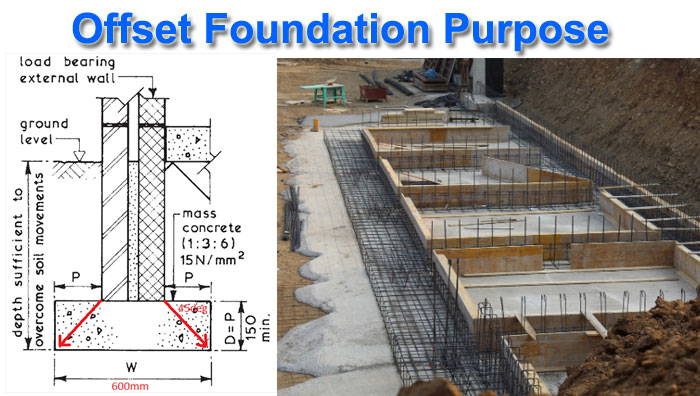What is Offset Foundation | Offset Foundations Purpose and Application
You may be familiar with the low-rise domestic foundation detail on the left. It comes from Roy Chudley and Roger Greeno’s Building Construction Handbook, 10th Edition.
It has been one of the most popular reference books for anyone taking college or university construction courses since it was first released in 1988.
It explains how foundations work when the load is applied centrally to a concrete strip foundation that is at least 150mm thick.
The load is distributed at 45 degrees over the whole width of the foundation into the supporting strata below with a 600mm wide foundation giving a 150mm projection on either side of the wall (equivalent to the depth of concrete).
But what if you can’t get the 600mm spread because you can’t trespass across a border or because another foundation is already in place next door?
In some instances, the builder may not be able to construct a foundation with a standard projection. In these cases, an offset foundation might be a good option (subject to design). The information below is a typical example that should suffice for most single-story residential additions.
The offset foundation
It’s 750mm wide and 450mm deep, with an A193 mesh layer in the concrete’s bottom and at least 50mm of steel cover.
This detail is normally appropriate for single-story home expansions, however, it will vary depending on the ground type.
If the permitted bearing pressure of existing subsoils at the formation level is less than 100 kN/m2, you’ll need a structural engineer to design it for you, or you’ll have to switch to a raft or piled foundation.






